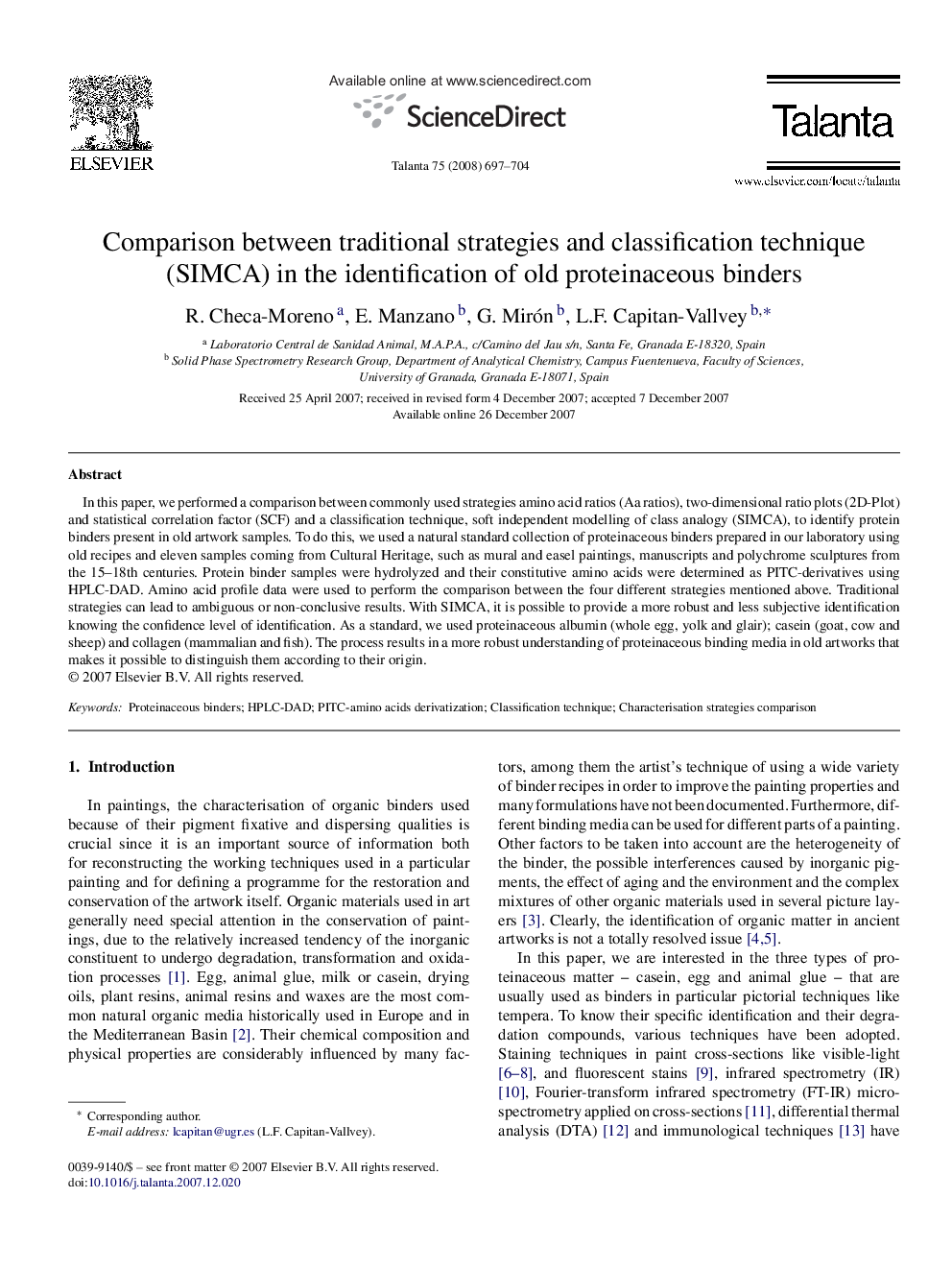| Article ID | Journal | Published Year | Pages | File Type |
|---|---|---|---|---|
| 1245575 | Talanta | 2008 | 8 Pages |
In this paper, we performed a comparison between commonly used strategies amino acid ratios (Aa ratios), two-dimensional ratio plots (2D-Plot) and statistical correlation factor (SCF) and a classification technique, soft independent modelling of class analogy (SIMCA), to identify protein binders present in old artwork samples. To do this, we used a natural standard collection of proteinaceous binders prepared in our laboratory using old recipes and eleven samples coming from Cultural Heritage, such as mural and easel paintings, manuscripts and polychrome sculptures from the 15–18th centuries. Protein binder samples were hydrolyzed and their constitutive amino acids were determined as PITC-derivatives using HPLC-DAD. Amino acid profile data were used to perform the comparison between the four different strategies mentioned above. Traditional strategies can lead to ambiguous or non-conclusive results. With SIMCA, it is possible to provide a more robust and less subjective identification knowing the confidence level of identification. As a standard, we used proteinaceous albumin (whole egg, yolk and glair); casein (goat, cow and sheep) and collagen (mammalian and fish). The process results in a more robust understanding of proteinaceous binding media in old artworks that makes it possible to distinguish them according to their origin.
